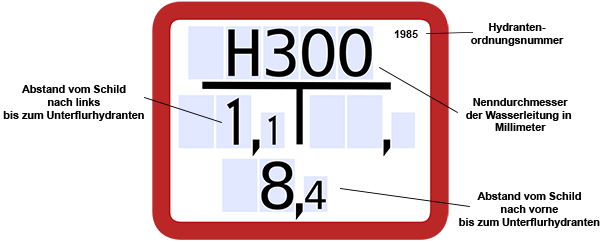hydrants
Fire hydrant signs are easy to recognize. They are white, rectangular signs measuring 250 x 200 mm with a 20 mm wide red border.
The black numbers on the sign indicate the location of the hydrant in meters to the front, left or right.


Fire hydrant signs are easy to recognize. They are white, rectangular signs measuring 250 x 200 mm with a 20 mm wide red border.
The black numbers on the sign indicate the location of the hydrant in meters to the front, left or right.

All rights reserved | Hermsdorf Fire Department